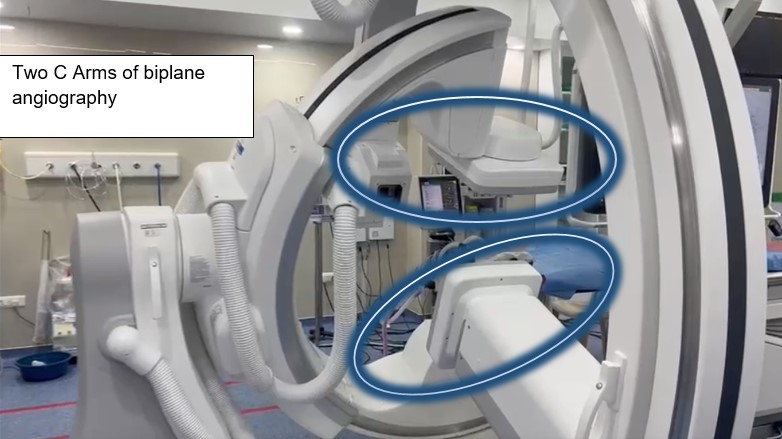Why is Bi-plane, and is it essential for neuro intervention
Unlike abdominal organs and heart the blood vessels of brain have tortuous anatomy and their course inside the skull is 3 dimensional. It is imperative that to understand the diseases and anatomical abnormalities of these blood vessels we need to have three dimensional imaging systems while doing angiographic interventions.
This 3 D understanding of the neuro vascular diseases is provided by simultaneous projections from 2 C arm fluoroscopic images placed perpendicular to each other. Bi-plane technology is the standard of care for modern neuro-interventions. It enables doctors to perform complex procedures with more precision and less risk.

Whether treating an aneurysm, embolizing an arteriovenous malformation, or performing a thrombectomy, bi-plane technology offers neuro-interventionalists an invaluable tool that has improved patient outcomes with effective and safe endovascular navigation guidance technique.
In addition with a biplane system, medical professionals can simultaneously capture images from multiple angles. This saves time during patient positioning, making for a more efficient and ergonomic system. Unlike single-plane systems, biplane setups require less radio-opaque dye, reducing the risk of complications due to dye usage.
DR.SURESH GIRAGANI CONSULTANT INTERVENTIONAL RADIOLOGIST at Apollo Hospital, has more than Seventeen years of clinical experience in vascular interventions with a special interest in neurovascular and peripheral vascular disease interventional procedures.
Services
Quick Links
Contact Us
Copyright 2021 Neuro All rights reserved. | Powered By KBK Business Solutions


